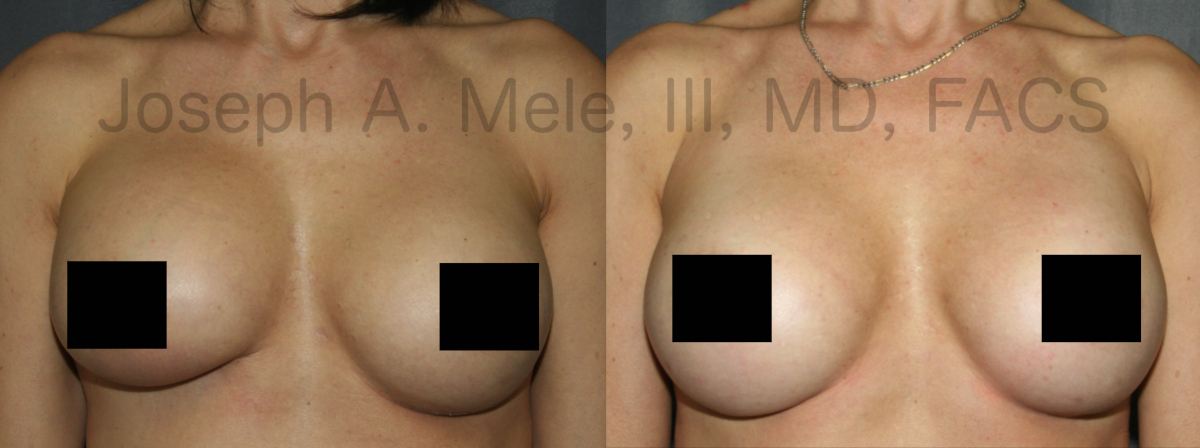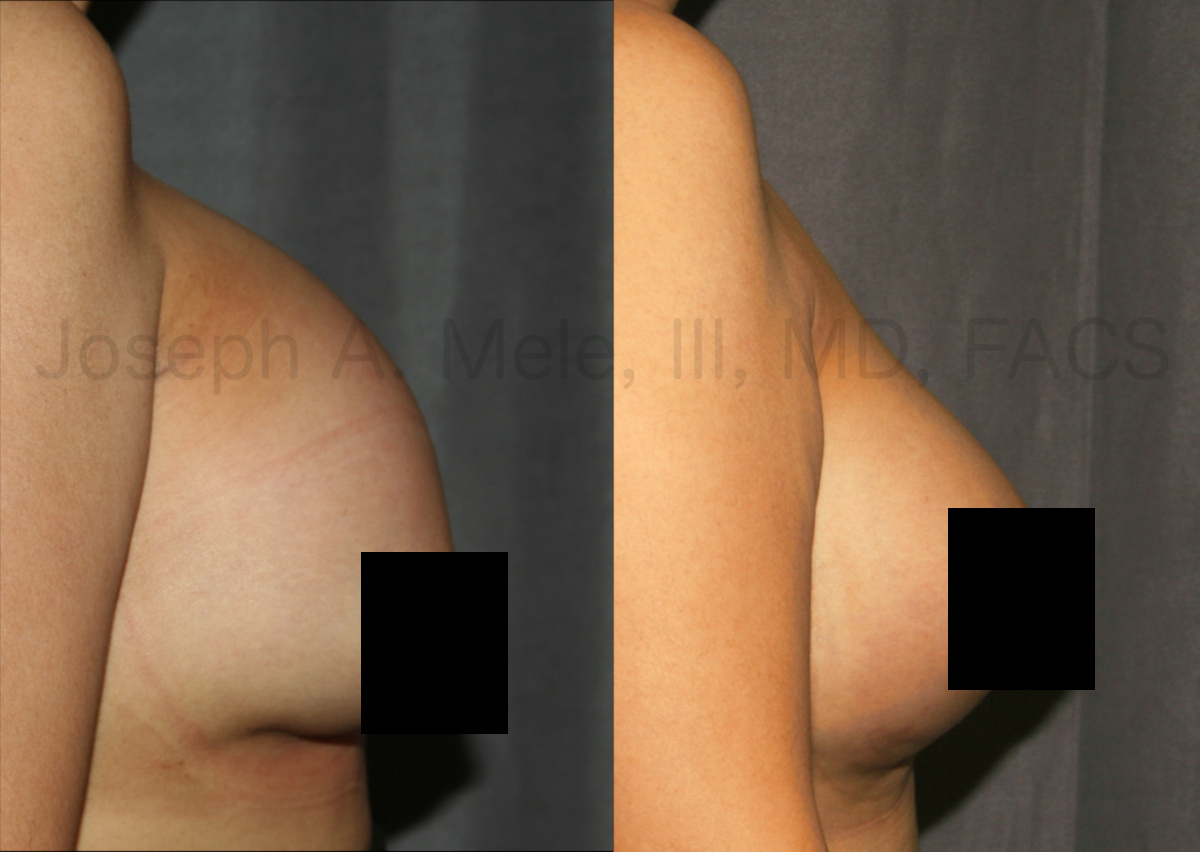Breast Implants have been used to enlarge breasts for over 50 years. Proper placement of the Breast Implants is the key to optimal Breast Augmentation. So, what keeps the Breast Implants in place? And what happens when they move?

Sometimes, capsular contracture only affects one side. The above patient’s right breast implant was lifted by the tightening capsule. She was treated with revision of the right breast to restore symmetry. (click photo for uncensored version)
Breast Augmentation Revision Video Presentation
Today’s Breast Implant Revision Video is from my latest episode of Body Beautiful. This segment originally aired on the SF Bay Area’s New Station, KRON 4, on September 9th. Several Breast Augmentation Revisions are illustrated with before and after pictures. Additionally, an example of severe tubular breast deformity correction is included. Since these problems are usually asymmetrical and present early in adolescence, correction is performed once the breasts have completed development. Tubular Breast Deformity correction often requires surgical correction, and later inline Breast Augmentation Revision is often necessary as their breasts continue to change with age, pregnancy and weight changes.
Breast Implants Revision Video Presentation
Breast Implant Security With Patches
Early breast implants were fixed in place by fuzzy patches placed on their backside. The patches resembled the soft loops of velcro. This open structure allowed cells to enter and for the body to incorporate the patches into the scar that naturally surrounds and protects the implant. The fixation provided by these patches was fabulous. Once attached, the patches never move.
There are several reasons these patches are no longer used on breast implants. In fact, even surgical removal of these patches is difficult and has the potential to cause significant injury.
Changing Breast Implants that have fixation patches is very difficult. The patches are located on the back of the implants to hold them to the ribs, so when trying to remove them, the breast implant is in the way. Lifting the breast implant often led to rupture as the soft shell would tear along the fixed edge of the patch. More often however, the implant ruptures along the patch edge prior to removal from normal to-and-fro motion of the breasts.
Without Patches, How Do Breast Implants Stay Put?
So, without patches, how do Breast Implants stay in place? The key is the breast implant capsule. Once a breast implant is placed, the body forms a capsule of scar tissue around it. This capsule serves as a pocket that holds the implant in place. Without a capsule, it would be possible to slide the implant around under the skin. Normally, this pocket is soft and not palpable, and holds the breast implant in place. This is termed a grade I capsule.
Capsular Contracture

Breast Implant Revision before and after pictures show the correction of breast implant malposition. The lower poles of the breasts were expanded, allowing the implants to drop, creating more natural tear-drop shaped breasts. (click photo for uncensored version)
Sometimes, the capsule tightens around the breast implant. The first sign is often firmness and immobility of the breast implant. This is a grade II capsule. When the breast is visually moved or the shape is deformed, a grade III capsule is formed. In the worst case, the capsule becomes tender or even painful. This is a grade IV capsule.
Breast Implant Revision Consultations
If you are considering Breast Augmentation for the first time, or it is time for Breast Implant Revision Surgery, choose an experienced and board certified plastic surgeon. In the San Francisco Bay Area call (925) 943-6353 to schedule a private consultation.
Previous Post Next Post